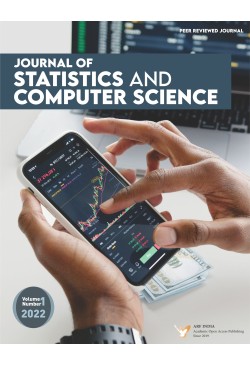
Journal of Statistics and Computer Science
Frequency :Bi-Annual
ISSN :2583-5068
Peer Reviewed Journal
Estimation of Matusita Overlapping Coefficient ???? for Two Weibull Distributions
Omar M. Eidous & Hala K. Maqableh (2023). Estimation of Matusita Overlapping Coefficient r for Two Weibull Distributions. Journal of Statistics and Computer Science. 2(1), 1-16.
Application of Machine Learning to Mortality Modelings during the Pandemic in the U.S.A
Rui Gong & Jinwei Liu (2023). Application of Machine Learning to Mortality Modelings during the Pandemic in the U.S.A.. Journal of Statistics and Computer Science. 2(1), 17-27.
An alternative geometric interpretation of sample-based Mahalanobis distances useful for interpreting outliers
Some Methods of Constructions of Partially Balanced Designs
A Simple Least-square Method For Estimating Homogeneous Causal Treatment Effect
Ying Zhang, Yuanfang Xu, Giorgos Bakoyannis, Yuan Wu & Bin Huang (2023). A Simple Least-square Method for Estimating Homogeneous Causal Treatment Effect. Journal of Statistics and Computer Science. 2(1), 55-77.
AN APPRAOCH TO IMPROVE THE LIFE TESING PLANS UNDER EXPONENTIAL - POISSON DISTRIBUTION
V. Kaviyarasu & A. Nagarajan (2023). An Approach to Improve the Life Tesing Plans under Exponential – Poisson Distribution. Journal of Statistics and Computer Science. 2(1), 79-89.